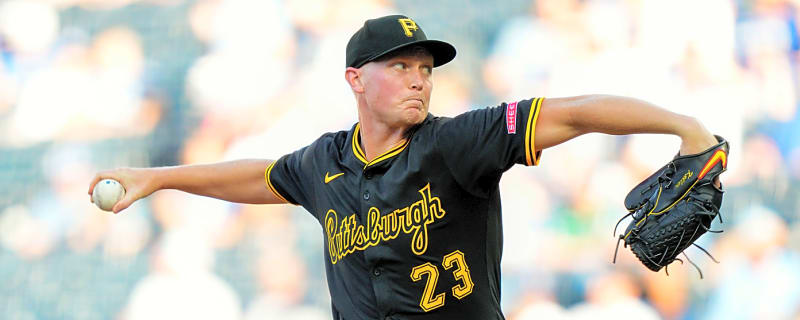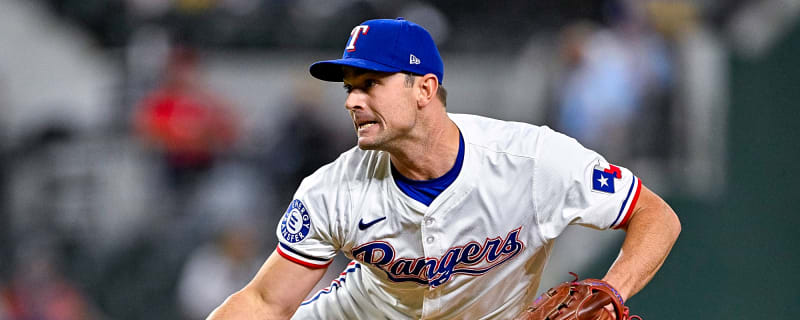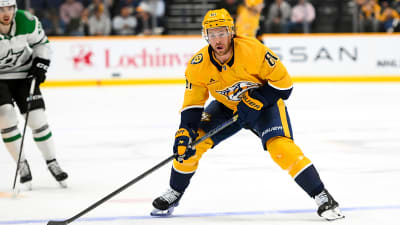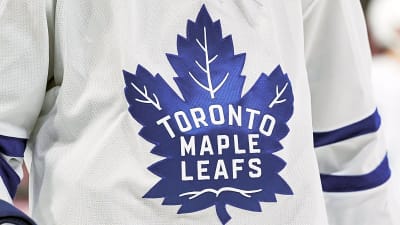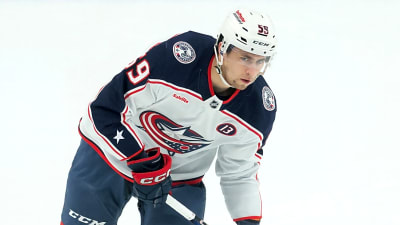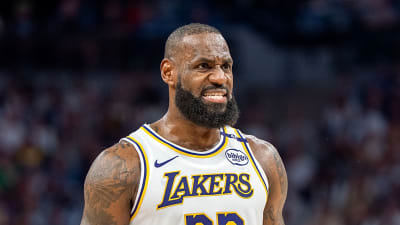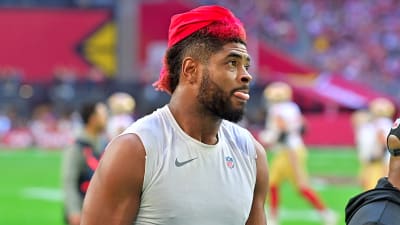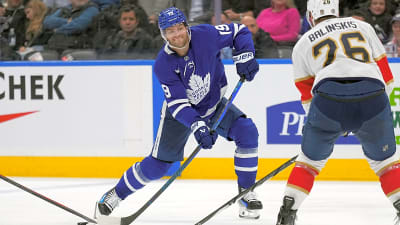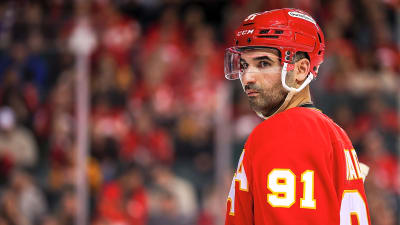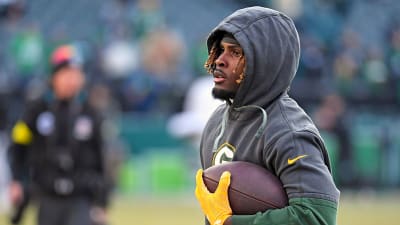- Home
- Quizzes
- My Quiz Activity
- Newsletters
- MY FAVORITES
- Add Sports/Teams
- SPORTS
-
NFL
- NFL Home
- Arizona Cardinals
- Atlanta Falcons
- Baltimore Ravens
- Buffalo Bills
- Carolina Panthers
- Chicago Bears
- Cincinnati Bengals
- Cleveland Browns
- Dallas Cowboys
- Denver Broncos
- Detroit Lions
- Green Bay Packers
- Houston Texans
- Indianapolis Colts
- Jacksonville Jaguars
- Kansas City Chiefs
- Las Vegas Raiders
- Los Angeles Chargers
- Los Angeles Rams
- Miami Dolphins
- Minnesota Vikings
- New England Patriots
- New Orleans Saints
- New York Jets
- New York Giants
- Philadelphia Eagles
- Pittsburgh Steelers
- San Francisco 49ers
- Seattle Seahawks
- Tampa Bay Buccaneers
- Tennessee Titans
- Washington Commanders
-
MLB
- MLB Home
- Athletics
- Arizona Diamondbacks
- Atlanta Braves
- Baltimore Orioles
- Boston Red Sox
- Chicago White Sox
- Chicago Cubs
- Cincinnati Reds
- Cleveland Guardians
- Colorado Rockies
- Detroit Tigers
- Houston Astros
- Kansas City Royals
- Los Angeles Angels
- Los Angeles Dodgers
- Miami Marlins
- Milwaukee Brewers
- Minnesota Twins
- New York Yankees
- New York Mets
- Philadelphia Phillies
- Pittsburgh Pirates
- San Diego Padres
- San Francisco Giants
- Seattle Mariners
- St. Louis Cardinals
- Tampa Bay Rays
- Texas Rangers
- Toronto Blue Jays
- Washington Nationals
-
NBA
- NBA Home
- Atlanta Hawks
- Boston Celtics
- Brooklyn Nets
- Charlotte Hornets
- Chicago Bulls
- Cleveland Cavaliers
- Dallas Mavericks
- Denver Nuggets
- Detroit Pistons
- Golden State Warriors
- Houston Rockets
- Indiana Pacers
- Los Angeles Clippers
- Los Angeles Lakers
- Memphis Grizzlies
- Miami Heat
- Milwaukee Bucks
- Minnesota Timberwolves
- New Orleans Pelicans
- New York Knicks
- Oklahoma City Thunder
- Orlando Magic
- Philadelphia 76ers
- Phoenix Suns
- Portland Trail Blazers
- Sacramento Kings
- San Antonio Spurs
- Toronto Raptors
- Utah Jazz
- Washington Wizards
-
NHL
- NHL Home
- Anaheim Ducks
- Boston Bruins
- Buffalo Sabres
- Calgary Flames
- Carolina Hurricanes
- Chicago Blackhawks
- Colorado Avalanche
- Columbus Blue Jackets
- Dallas Stars
- Detroit Red Wings
- Edmonton Oilers
- Florida Panthers
- Los Angeles Kings
- Minnesota Wild
- Montreal Canadiens
- Nashville Predators
- New Jersey Devils
- New York Islanders
- New York Rangers
- Ottawa Senators
- Philadelphia Flyers
- Pittsburgh Penguins
- San Jose Sharks
- Seattle Kraken
- St. Louis Blues
- Tampa Bay Lightning
- Toronto Maple Leafs
- Utah Mammoth
- Vancouver Canucks
- Vegas Golden Knights
- Washington Capitals
- Winnipeg Jets
- NCAAF
- NCAAM
- Olympics
- Boxing
- Entertainment
- Lifestyle
- Golf
- MMA
- Soccer
- Tennis
- Wrestling
- Sports Betting
- More Sports
- RESOURCES
- My Account
- YB on Facebook
- YB on Twitter
- YB on Flipboard
- Contact Us
- Privacy Policy
- Terms of Service
Yankees issues on display in return from All-Star break
The New York Yankees are most likely going to find themselves in the playoffs this season. But even if they do, they have some serious potential flaws that are going to limit their ceiling.
The 'MLB pitcher with complete games in 2024' quiz
Starting pitchers going all nine innings of a game has become increasingly rare in MLB, but it did happen on 24 occasions in 2024. How many of the pitchers to throw a complete game can you name in five minutes?
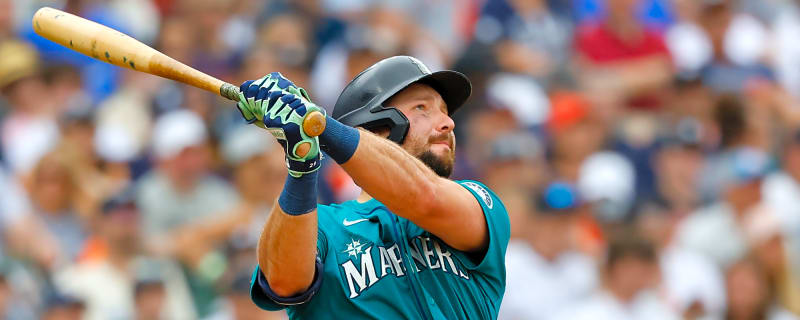
Cal Raleigh on pace to break American League record set by Aaron Judge
Fresh of his victory in the 2025 Home Run Derby, Seattle Mariners’ backstop Cal Raleigh is aiming to add another home run trophy to his mantle.
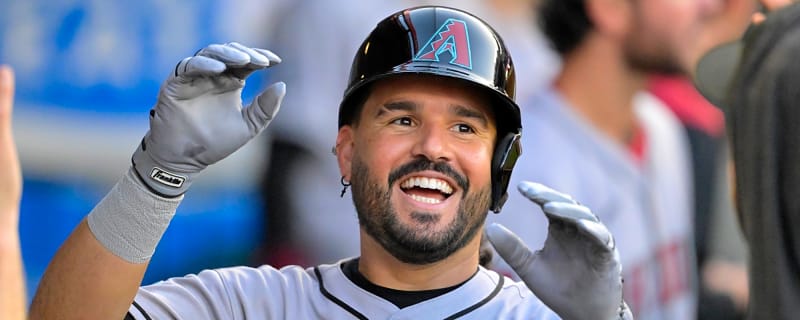
Top slugger on MLB trade block knows where he wants to play
It may be a matter of time before third baseman Eugenio Suarez is traded from the Arizona Diamondbacks.

The 'MLB All-Star Game MVPs' quiz
MLB began awarding the All-Star Game MVP Award during the 1962 season. How many of the MVPs since then can you name in six minutes?
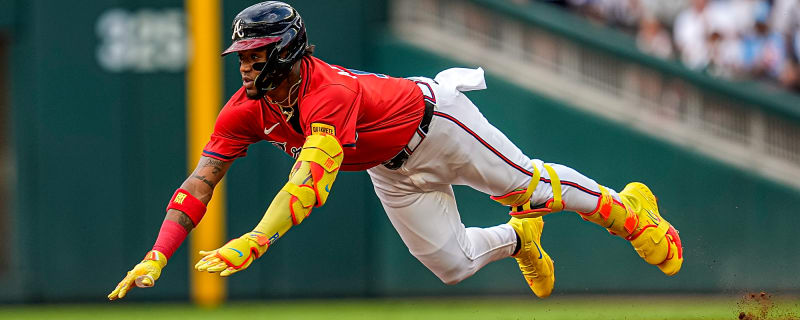
Ronald Acuna Jr.'s brilliance remains bright spot in dismal Braves season
Atlanta Braves outfielder Ronald Acuna Jr. has not only returned to full health after missing half of last season due to another major knee injury, but he also has returned to being one of the best players in baseball.
25 MLB players who might be fantasy league winners in the second half
It's crunch time for fantasy baseball managers as we head into the final two months of the regular season. These 25 players could make all the difference as pickups or acquisitions for fantasy rosters.
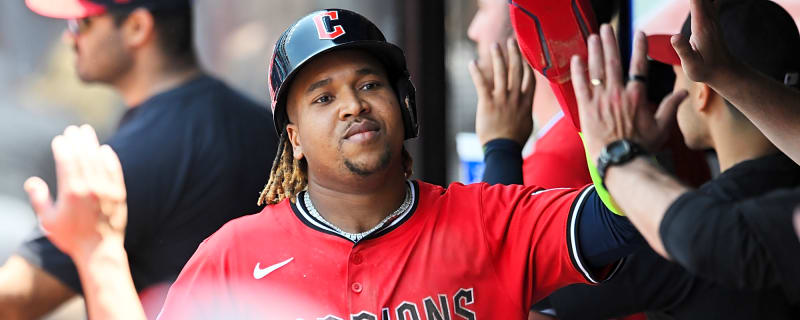
Guardians star Jose Ramirez is quietly building a Hall of Fame resume
Cleveland Guardians superstar third baseman Jose Ramirez is one of the most consistently productive players in the major leagues.
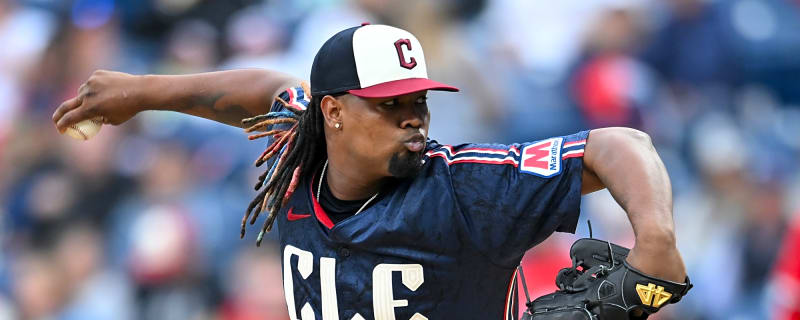
New update emerges on Luis Ortiz gambling investigation
Ortiz was placed on paid administrative leave earlier this month amid a gambling investigation, and it will be quite a while before he is eligible to return.

Five reasons the Jays will win the AL East (despite the run diff doubters)
They’ve been swept aside by “experts” and picked apart by math. But the Toronto Blue Jays just keep winning.
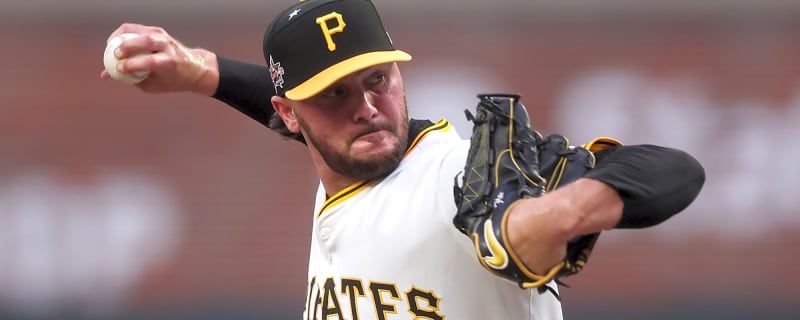
Report reveals Pirates' stance on trading Paul Skenes
The Pittsburgh Pirates are on pace to miss the playoffs for the 10th consecutive season, and some have wondered if they will consider trading Paul Skenes for a massive haul of prospects.
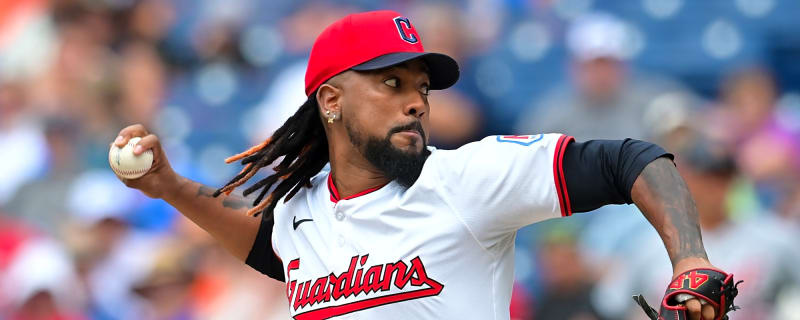
Insiders address if Guardians could trade All-Star closer before deadline
On Friday, MLB insider Buster Olney of ESPN addressed the Guardians' plans for the rest of July.

Can Mariners' Cal Raleigh continue historic season in second half?
Midway through the 2025 Major League Baseball season, a historic home run race is unfolding.
The 20 greatest MLB managers who never won a World Series
Success in Major League Baseball can be measured in many ways; namely, winning a World Series. As a player, it is truly special. Meanwhile, doing so in the capacity of manager is a significant accomplishment, considering the pressure to succeed.

Yankees' Aaron Judge reveals how long he'd like to continue playing career
In an article by The Athletic's Ian O'Connor published on Friday, Aaron Judge revealed that he'd like to continue playing into his 40s.
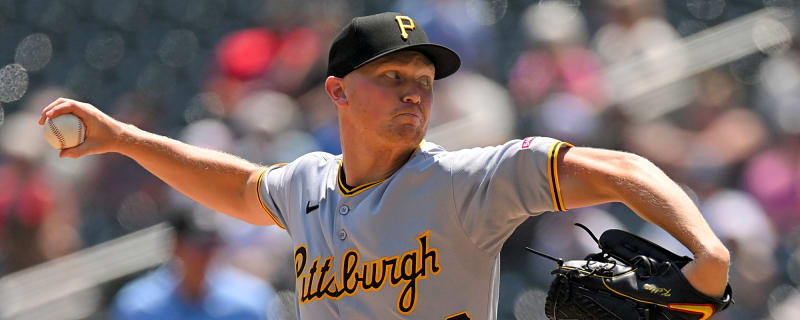
Yankees targeting Pirates All-Star for starting rotation
Pirates hurler Mitch Keller is becoming one of the hottest names being tossed around the rumor mill ahead of the MLB trad deadline.
The 'MLB leaders in Gold Gloves' quiz
Since 1957, MLB has awarded players for superior individual fielding performances at each position with the Rawlings Gold Glove Award. In that time, 22 different players have earned at least nine Gold Gloves at their respective positions. Can you name them all in five minutes?
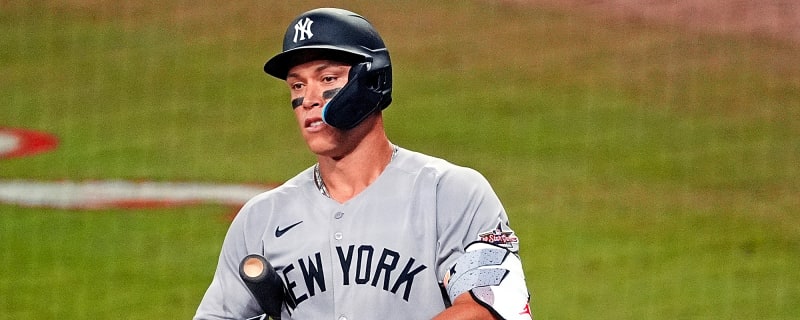
Athletics slugger has surprising assessment of Yankees' Aaron Judge
Athletics slugger Brent Rooker suggested that some may not fully appreciate how special Aaron Judge has been over the past few seasons when healthy.

Can the Braves snatch this rival All-Star slugger in free agency?
To say it has been a nightmare season for the Atlanta Braves is nothing short of an understatement.
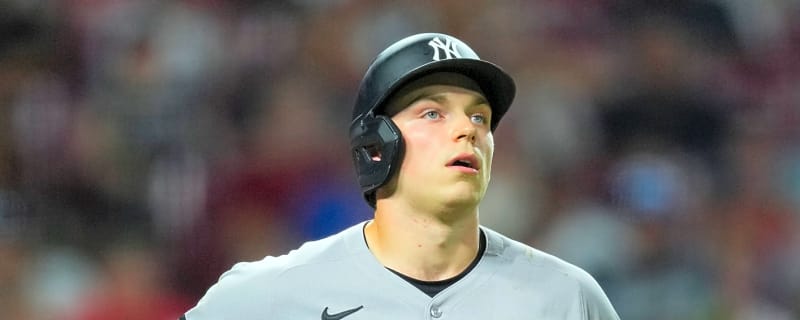
The case for the Yankees trading Ben Rice at the deadline
The New York Yankees are predicted to make bold moves ahead of the July 31 trade deadline. One particularly daring move they could make is trading away breakout slugger Ben Rice.

Five major MLB storylines to watch in second half of season
The second half of the 2025 Major League Baseball season starts on Friday. Let's get ready for it by looking at five big storylines to watch the rest of the way.

Veteran starter announces MLB retirement after 13 seasons
After parts of 13 seasons in the big leagues, Kyle Gibson is retiring. The longtime MLB starter announced the news on the "Serving It Up" show Thursday afternoon.

Three trade-deadline targets who can land Yankees back in World Series
What replacements on the market can lead the Yankees back to the World Series? Here are three solid bets.
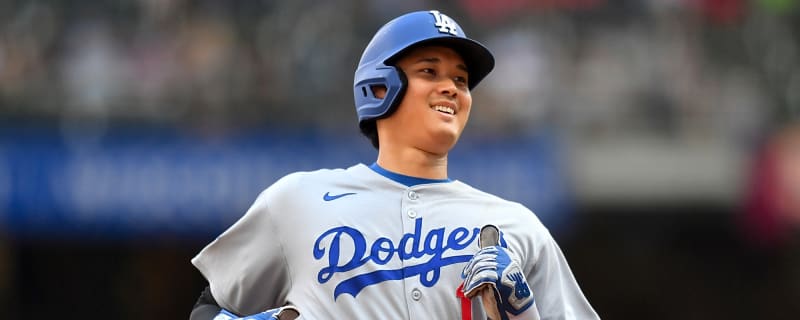
Three Shohei Ohtani storylines to follow in MLB's second half
On his way to a potential second consecutive NL MVP award, the next 65 games for Shohei Ohtani and the Dodgers will hold plenty of intrigue.
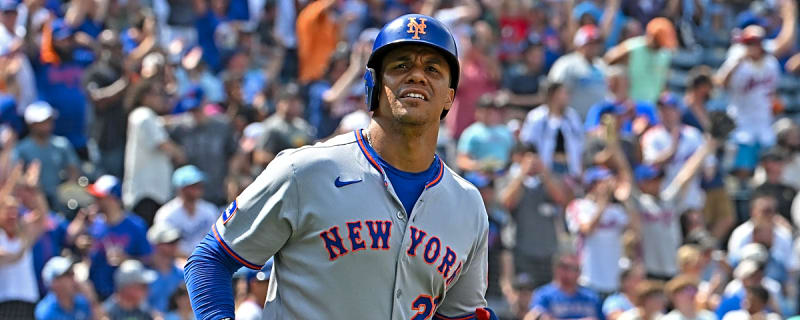
Analyst shares how Juan Soto must improve amid Mets' pursuit of Phillies in NL East race
ESPN's David Schoenfield noted on Thursday how Soto must improve at the plate as the Mets and Phillies seem destined to battle for the NL East throughout the second half.

Ten most egregious MLB Hall of Fame snubs by position
While many of the greatest players in MLB history have been enshrined in Cooperstown, there have been several who have yet to join their ranks.
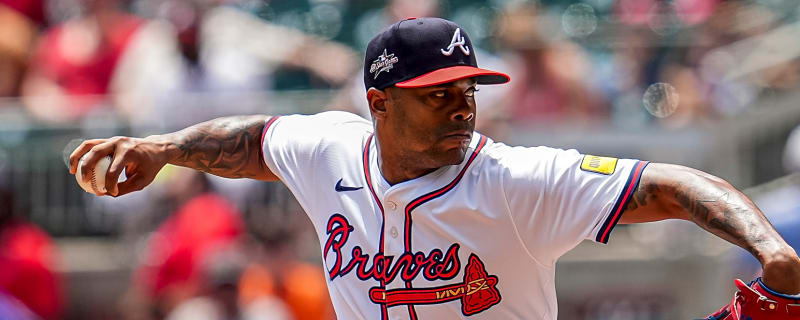
Three potential landing spots for Braves closer Raisel Iglesias
It turns out the Atlanta Braves never truly recovered from their pitiful 0-7 start to the 2025 season.
Breaking News
Trending News
My Favorites
Customize Your Newsletter
 +
+
Get the latest news and rumors, customized to your favorite sports and teams. Emailed daily. Always free!
PRIVACY POLICY EDITORIAL POLICY CONTACT US
ABOUT YARDBARKER TERMS OF SERVICE
Use of this website (including any and all parts and
components) constitutes your acceptance of these
Terms of Service and Privacy Policy.
This site is for entertainment purposes only.
There is no gambling offered on this site.
Gambling Problem? Call 1-800-Gambler.

 Free Newsletters
Free Newsletters